'Great to see' increase in tourists from the Republic
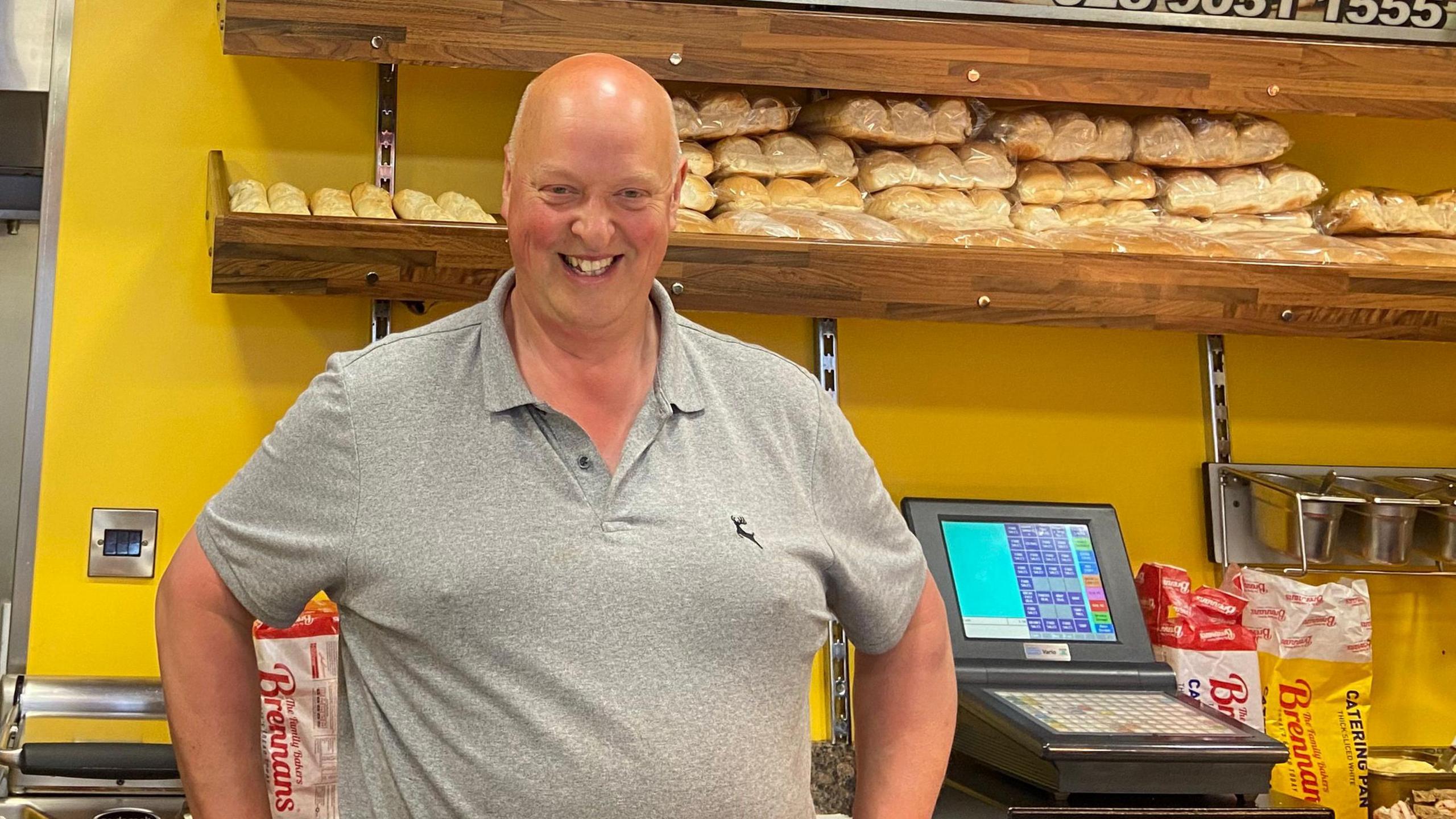
Ken Pringle has run a café on Great Victoria Street for 22 years
- Published
The number of tourist visits from the Republic of Ireland to Northern Ireland has tripled in the past decade, new analysis suggests.
Economists at Ulster University and Dublin City University have looked at official data and interviewed industry stakeholders.
The data suggests there were 400,000 south-to-north trips in 2013- which had jumped to 1.3m by 2023.
Ken Pringle has run a café on Great Victoria Street, opposite the Europa Bus station in Belfast, for 22 years.
Speaking to BBC News NI, he said he has noticed an increased in visitors from the Republic of Ireland in recent years.
"We would get a lot of tourists in here picking up a sandwich before getting the bus," he said.
"I think people from the south historically wouldn't have come up here because of the Troubles or the roads weren't great but obviously now things are different.
"On Friday afternoons on this street it's like another world. People coming up for stag and hen dos, you see them coming out of the bus station carrying their bags, the nightlife has gotten a lot better here, it's great to see."
'More people coming from the south'
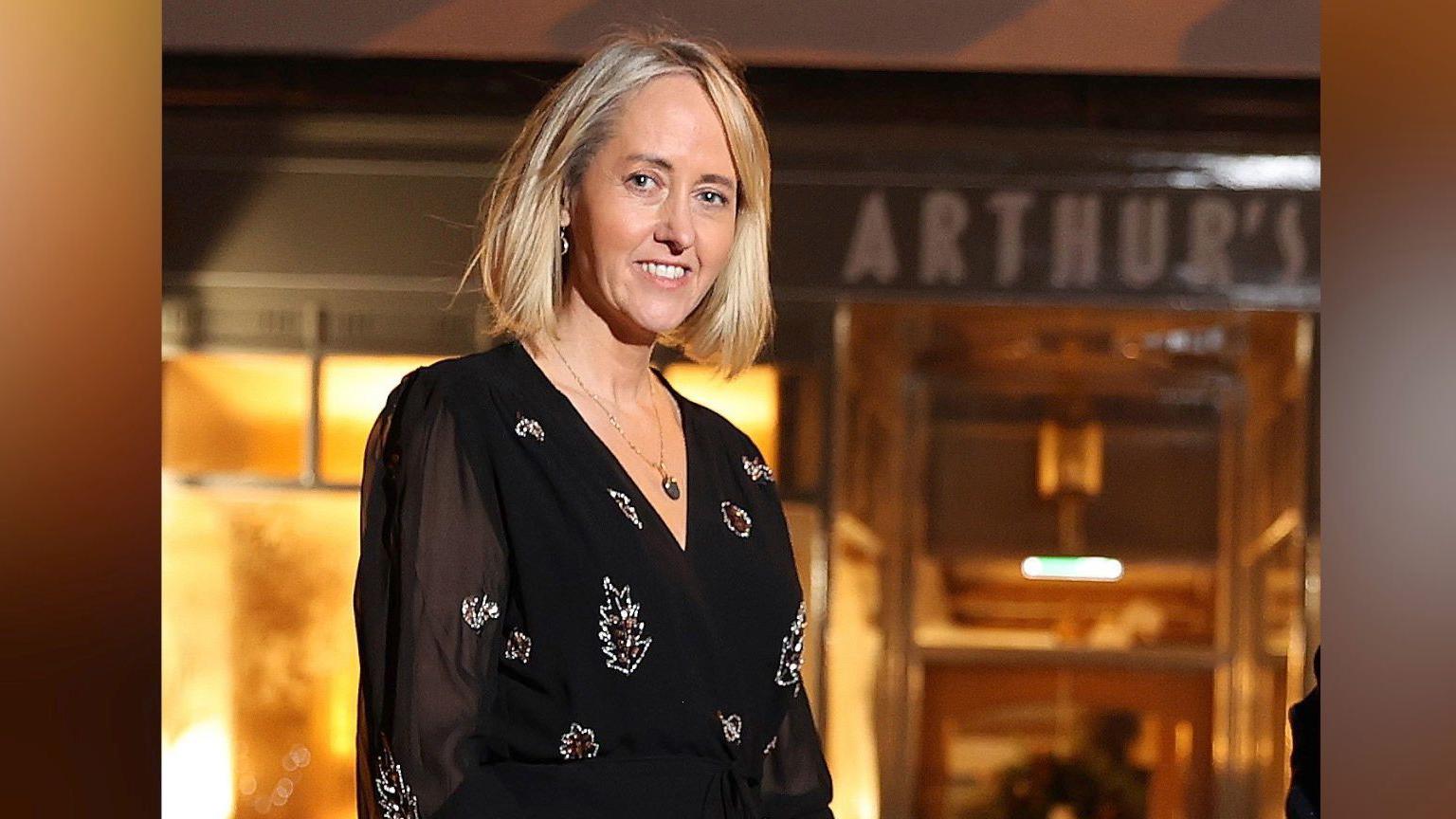
“My gut feeling is there are more and more people coming from the south,” says Lynne McCabe
Lynne McCabe owns Arthur’s of Royal Hillsborough, a boutique guesthouse and coffee shop, as well as two other guesthouses in Moira and Dromore.
Ms McCabe said she has also seen an increase in people visiting from the Republic.
“My gut feeling is there are more and more people coming from the south.”
She said this is aided by an increasing amount of cross-border events, particularly sporting events and concerts.
The businesswoman added that she had also seen a rise in foreign tourists including a trip to Northern Ireland to their holiday.
“They fly into Dublin, do their tour of the south and then head up to us.”
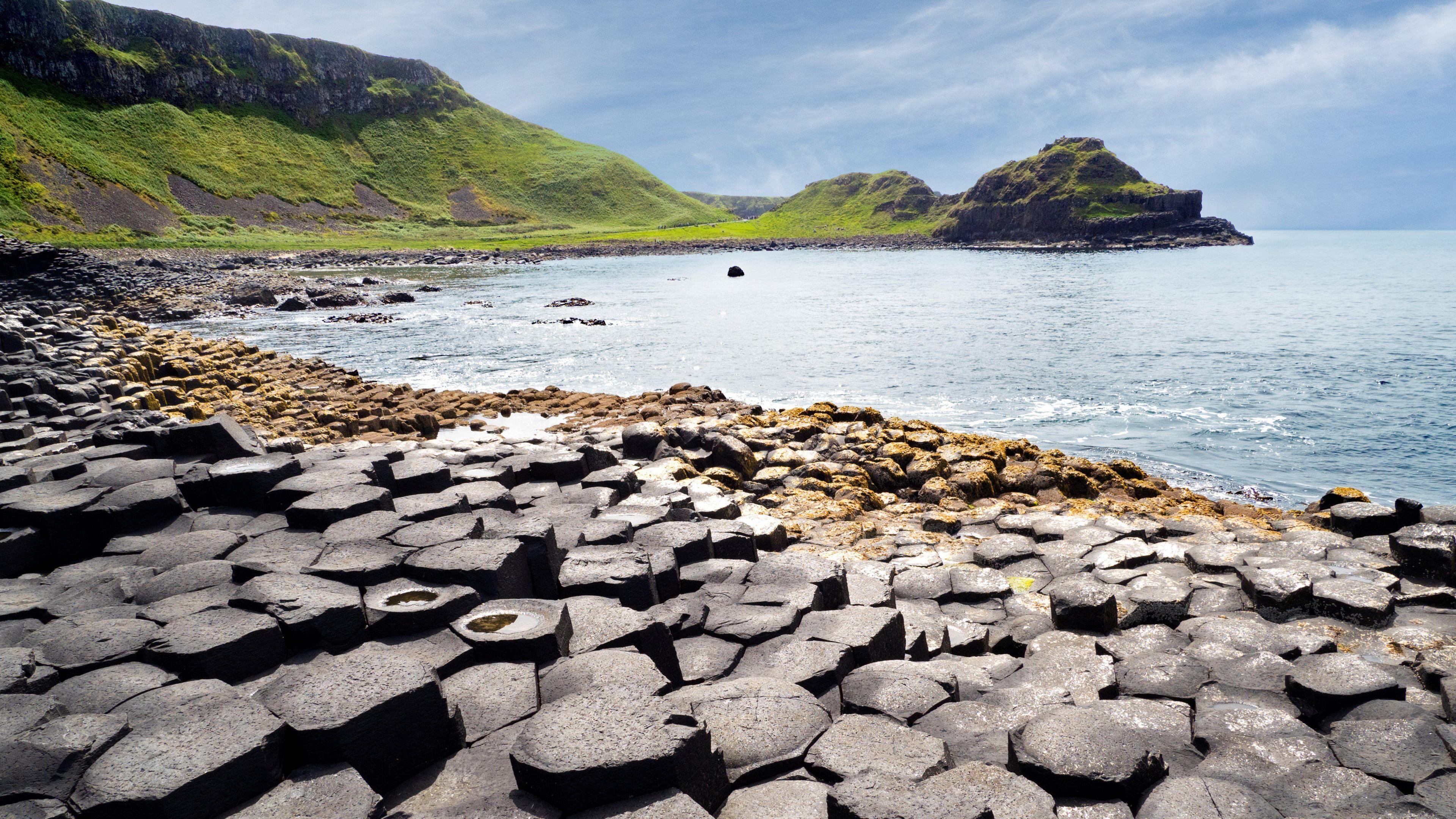
There were an average of 120,000 south-to-north trips each quarter before the pandemic but the new average is 200,000
A significant part of that growth has happened since the coronavirus pandemic.
During the pandemic people were prevented from flying to overseas destinations, which led to an initial bump in visitor numbers which has been sustained.
There were an average of 120,000 south-to-north trips each quarter before the pandemic but the new average is 200,000.
The economists say that growth has been concentrated in the short breaks market describing it as "striking" that despite the number of trips increasing substantially, the average number of nights spent on a cross-border trip has remained largely unchanged.
It has stayed at approximately two nights a trip, peaking at 3-3.2 nights a trip after the initial easing of pandemic restrictions in the first half of 2021.
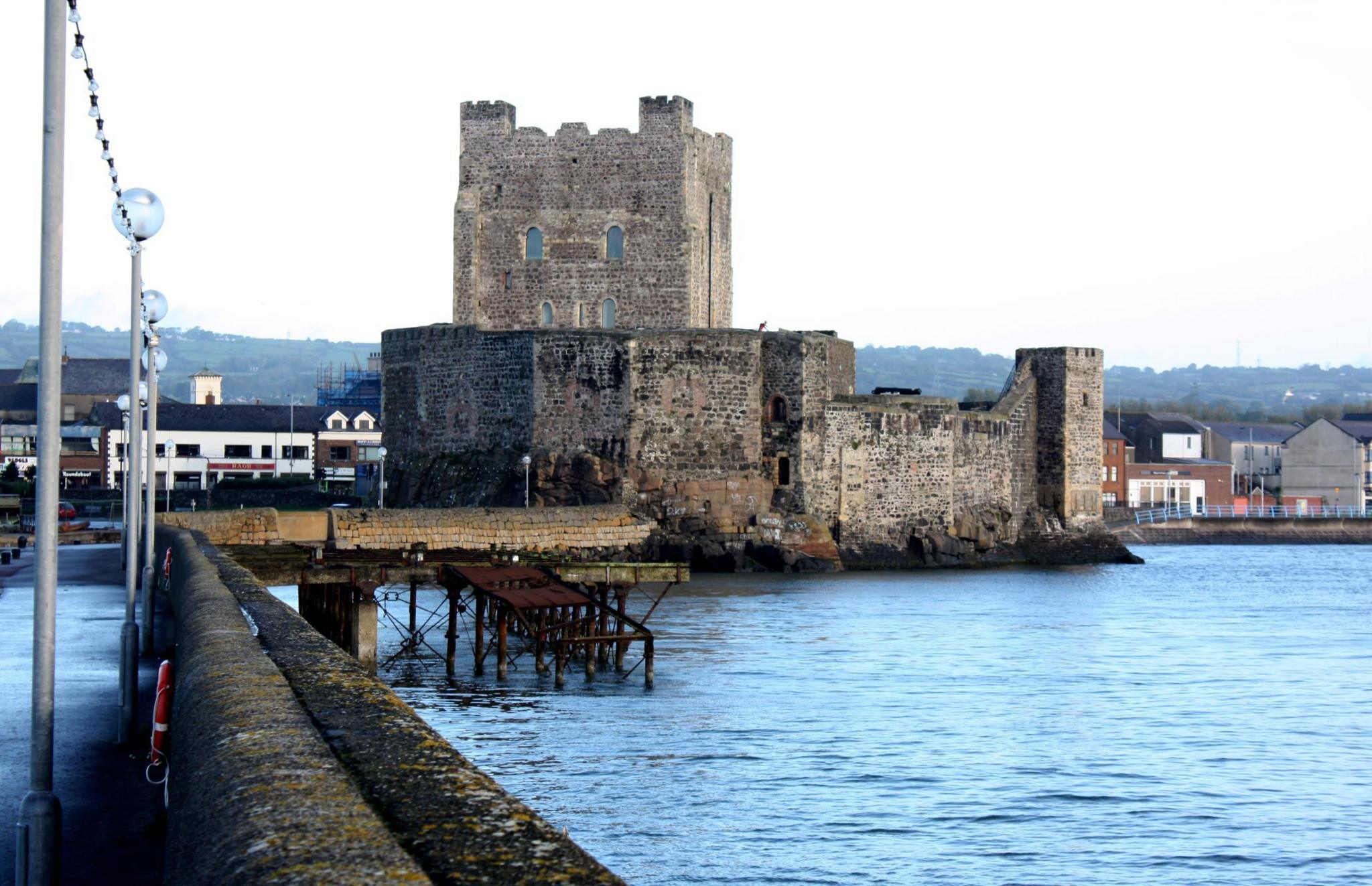
Why are tourism numbers going up?
Speaking to BBC Radio Ulster's Good Morning Ulster programme, Anastasia Desmond , Senior Economist at Ulster University's Economic Policy Centre, said value for money and changing perceptions of Northern Ireland were behind some of the reasons for the increase.
"There has been a pattern of arriving into Dublin Airport and, we call it 'turning right and coming up the road instead of turning left', but there is still a need there for increasing the promotion of Northern Ireland," Ms Desmond said.

The study says that almost half of visitors to NI stay with friends and family compared to just over a quarter of visitors to the Republic
Electronic Travel Authorisation
The Electronic Travel Authorisation (ETA) is a permit which non-British and non-Irish citizens, who do not require a visa, will generally need to enter the UK.
That will include international visitors who arrive in Dublin and then plan to travel to Northern Ireland.
"It has been identified as a potential barrier to both regional and cross-border travel," Ms Desmond said.
"Any sort of barrier has to have some sort of effect whether that be positive or negative, but in this instance we can't see any positive impact likely to come out of this.
"We’ve come an awful long way considering that we’ve had an extended period of civil unrest and as a country we’ve got a real vibrant tourism industry in years after that that we’ll be looking to continue to grow."
The study also points to continued structural differences between the tourism industries on either side of the border.
The Republic’s industry is much bigger, with the output of the broad tourism sector estimated at almost €14bn (£11.9bn) in 2019 compared to about €2.9bn in Northern Ireland.
It also attracts a bigger proportion of "pure" holiday visitors compared to NI, where people visiting friends and family remains the largest share of the market.
The report adds that this will "have a knock-on impact on levels of expenditure by visitors".
It suggests the one opportunity for growth in NI could be "emerging capacity constraints" in the Republic’s market.
Related topics
- Published7 May 2024
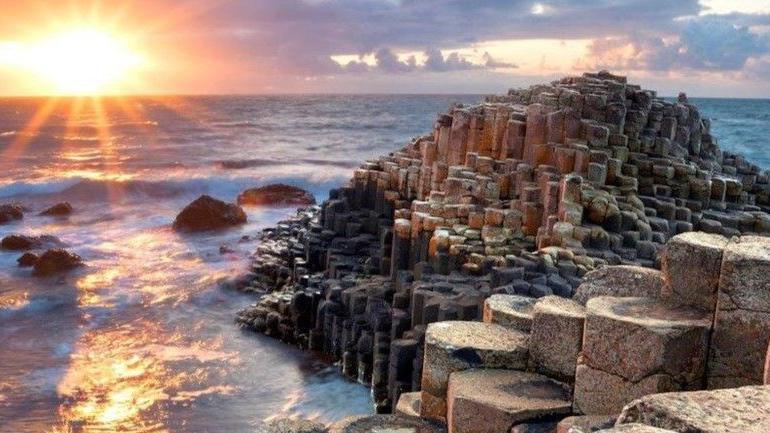
- Published23 April 2024
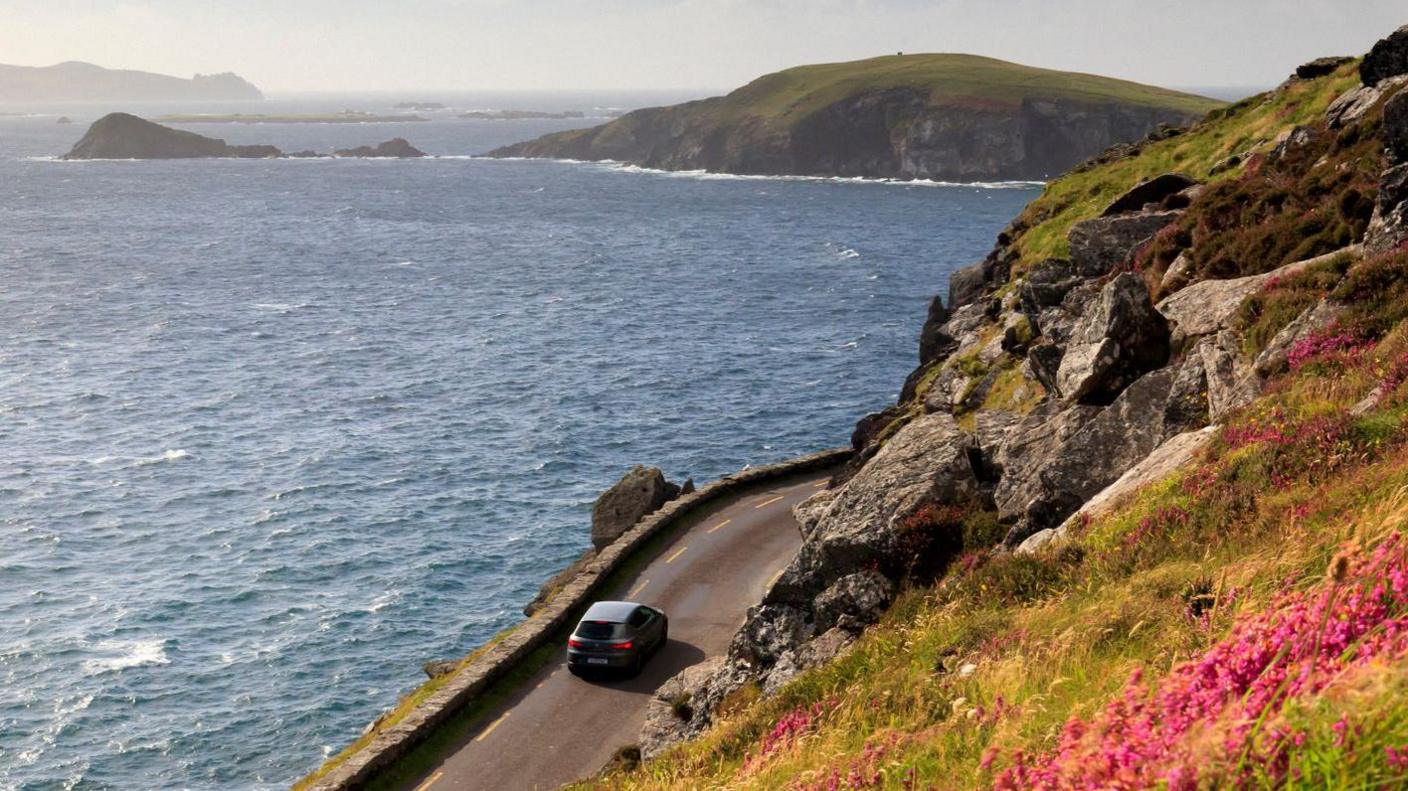
- Published7 November 2023
